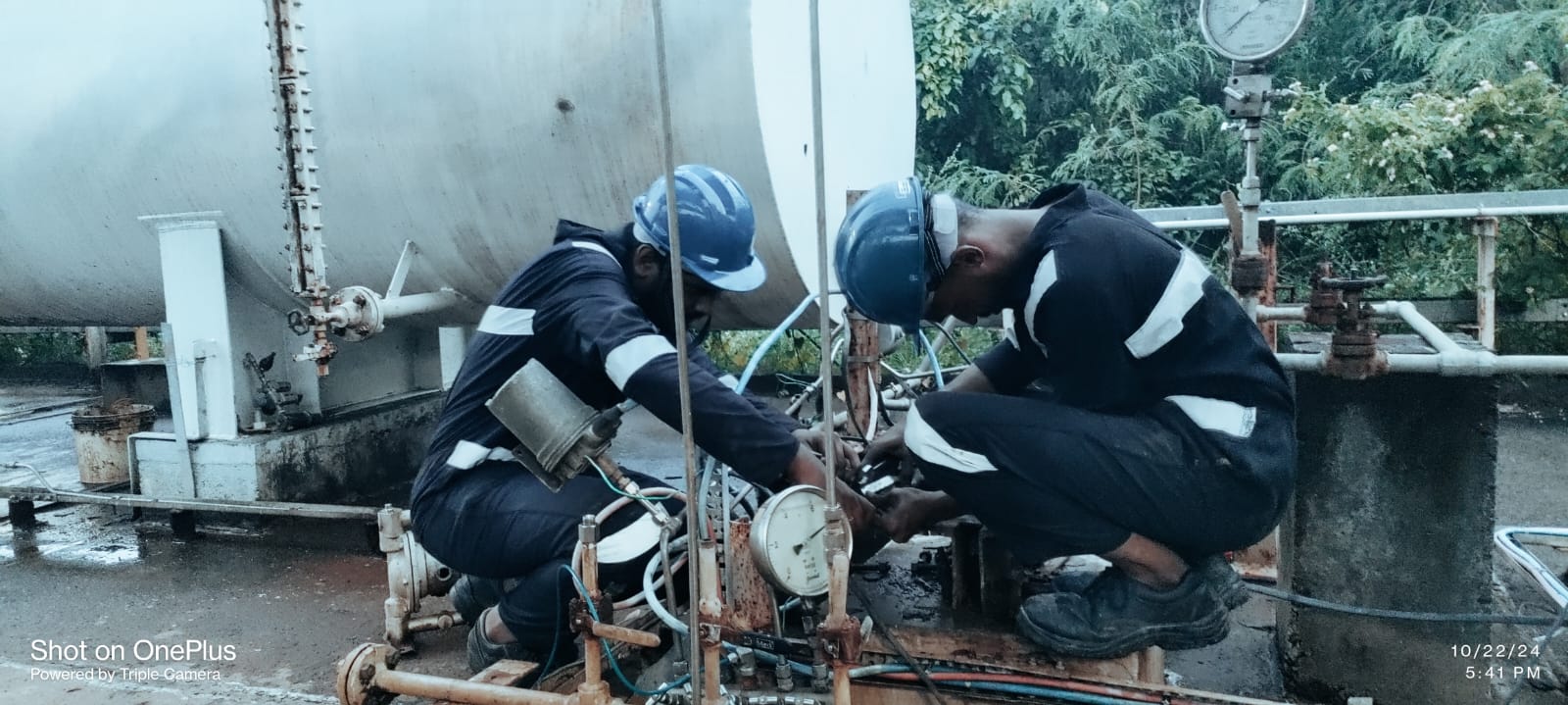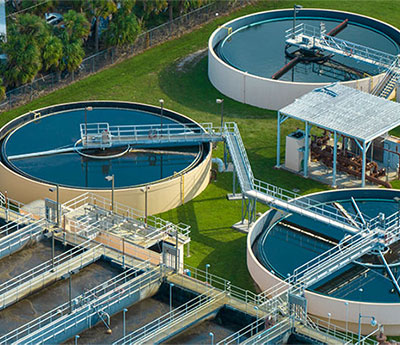Andhra Pradesh’s growing chemical sector (from Visakhapatnam to Kurnool) relies heavily on water for processing, generating complex wastewater that can burden local water bodies if untreated. Recent studies (e.g. by NIT Warangal) found that chemical and metallurgical plants contribute roughly 31% of industrial pollution in the Krishna River basintimesofindia.indiatimes.com. In fact, organic loads (BOD/COD) from AP industries are extremely high – for example, the study noted an AP river BOD load of ~3.3×10^5 kg/day in urban areas. This environmental pressure and strict APCB regulations mean chemical manufacturers must implement robust effluent treatment.
Standard Treatment Processes in the Chemical Industry
Chemical manufacturing wastewater typically contains toxic chemicals, high organics, suspended solids, and sometimes heavy metals. Removing these requires a multi-stage Effluent Treatment Plant (ETP). An ETP is essentially a sequence of physical, chemical, and biological processes engineered to strip out pollutants before reuse or discharge. For example, initial stages will equalize flow, screen out debris, and adjust pH; middle stages use coagulants and clarifiers to remove suspended solids; and secondary biological reactors (like Moving Bed Biofilm Reactors or Sequencing Batch Reactors) consume dissolved organics. Finally, tertiary units (sand filters, activated carbon, UV/chlorination, etc.) polish the water to meet safety standards.
Typical ETP stages include:
-
Preliminary Treatment: Bar screens, grit chambers and oil–grease traps remove floatables and debris.
-
Primary Treatment: Equalization tanks stabilize pH/flow; chemicals (alum, PAC, ferrous sulfate, etc.) induce coagulation/flocculation; and settling clarifiers remove flocculated solids.
-
Secondary (Biological) Treatment: Aerobic or anaerobic microbial systems biodegrade organic load. Common technologies include Activated Sludge, Moving Bed Biofilm Reactors (MBBR), and Sequencing Batch Reactors (SBR). (For high-strength streams, anaerobic digesters or UASB reactors may be used.)
-
Tertiary Polishing: Pressure sand and membrane filters, activated-carbon units, and disinfection (UV or chlorination) eliminate remaining color, odour, pathogens or specific residues.
-
Sludge Handling: The settled solids from these stages are dewatered (filter presses, centrifuges) and disposed or processed for safe disposal.
Each stage is tailored to the plant’s effluent composition and legal discharge limits. For instance, industry practice often demands that treated effluent meets strict standards (e.g. BOD, COD, metals) set by AP Pollution Control Board. Modern plant design also embeds online monitoring (flow, DO, pH, organics) so operators can adjust processes in real time for optimal performanceacedynamics.in.
Zero-Liquid-Discharge (ZLD) & Sustainability Trends
Increasingly, Andhra Pradesh’s regulators and industrial policies push for Zero Liquid Discharge (ZLD) in high-pollution sectors. Under ZLD, all wastewater is recycled on-site – no untreated liquid is released into rivers. In practice, this means integrating the ETP with advanced membrane and evaporation systems. A ZLD scheme typically adds high-rejection reverse osmosis (RO) and Multi-Effect Evaporators (MEE) after the ETP; the clean RO permeate is reused, while the concentrated brine is crystallized/dried into solid waste. In fact, legal mandates in some states (including Andhra Pradesh) now require major chemical plants to adopt ZLD for their effluents.
Adopting ZLD and reuse provides multiple benefits: environmental compliance (no effluent discharge), water conservation (maximal reuse of treated water), and cost savings (reduced freshwater intake and effluent charges). As Veolia and others note, integrated solutions “maximize water reuse (including ZLD), minimize waste volumes, and reduce operational costs” in the chemical industry. Moreover, reusing treated wastewater (for cooling, irrigation, boilers, etc.) eases pressure on scarce fresh sources. Ace Dynamics emphasizes these reuse strategies in its designs, planning for “wise wastewater repurposing” that lowers freshwater needs and boosts sustainability.
In short, modern water management in AP’s chemical sector is not just about “cleanup” but about circular use. Closed-loop systems (ETP+RO+evaporation) turn effluent into a resource. By contrast, older plants had no reuse, leading to river pollution; recent studies showing heavy contamination (e.g. Krishna River) underline the need for this shifttimesofindia.indiatimes.com.
Ace Dynamics – Local Expertise & Projects
As a Visakhapatnam-based engineering firm, Ace Dynamics brings hands-on experience in AP’s industrial water challenges. Ace’s team has deep chemical/engineering expertise and offers turnkey solutions (design, fabrication, installation and commissioning) for ETPs, STPs, RO/DM units, and related systems. Under their “Blue Sea” brand they design modular wastewater plants and pumping systems customized for client needs.
Ace Dynamics also provides consulting and project management services. Their experts begin with detailed water-balance assessments and then recommend the best process line-up (e.g. MBBR vs SBR) for each plant’s effluent profile. They stress sustainable design: integrating water reuse loops, energy-efficient operations, and compliance. As their mission states, they aim to use “cutting-edge technologies that maximise water usage, reduce waste, and ensure environmental harmony”.
In Andhra Pradesh, Ace Dynamics has delivered several notable projects. For example, they installed a new sewage treatment plant (STP) at the IOCL refinery terminal in Visakhapatnam – complete with operator training (Ace even held a seminar on it). They also built an effluent treatment plant for a large slaughterhouse in Narsapuram (West Godavari), working with local authorities to meet discharge norms. In both cases, Ace’s systems treat the organic-rich wastewater to meet reuse and discharge standards, often exceeding legal requirements. Beyond design and build, Ace equips plants with monitoring systems so managers can continuously track performance and optimize operationsacedynamics.in.
Ace’s presence across AP (and neighboring Odisha/Chhattisgarh) means they can support clients throughout the project lifecycleacedynamics.in. Chemical industry customers benefit from Ace’s sector know-how – for instance, understanding how to “remove hazardous chemicals” and help clients recycle water and maintain compliance, as highlighted in industry posts. In short, Ace Dynamics offers chemical companies in Andhra Pradesh the local, eco-conscious engineering partner needed to turn wastewater into a controlled, reusable stream.
Conclusion
Water and wastewater management is now central to the competitiveness and compliance of Andhra Pradesh’s chemical industry. Proven treatment trains (screening→ETP→RO→polishing) backed by Zero Liquid Discharge are becoming standard. By using multi-stage treatment and recycling, companies protect rivers like the Krishna while cutting fresh-water costs. Technology leaders like Ace Dynamics are meeting these demands head-on, offering integrated solutions (from MBBR/SBR reactors to advanced filtration) that align with AP’s environmental goals. For chemical professionals and plant owners, the takeaway is clear: investing in robust ETP/STP infrastructure and reuse strategies not only ensures legal compliance but also promotes sustainability and operational efficiency. Partnering with an expert engineering firm like Ace Dynamics can streamline this process – turning regulatory challenges into an opportunity for greener, cost-effective operations.
Sources: Industry and environmental reportstimesofindia.indiatimes.com; water treatment technology providers; Ace Dynamics official publications and project summariesacedynamics.in.

